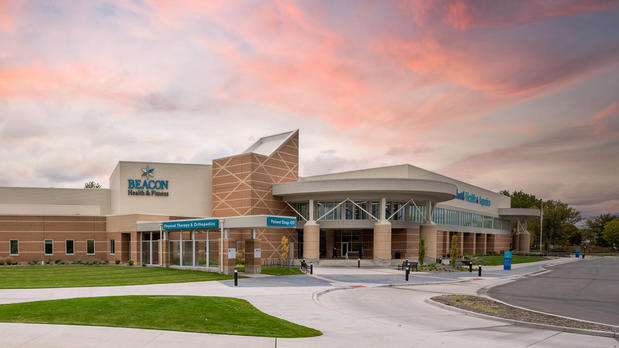Electroconvulsive therapy (ECT)
This procedure can greatly and rapidly improve severe symptoms of depression, mania, catatonia or other mental health conditions.
Overview
Electroconvulsive therapy (ECT) is a procedure done under general anesthesia. During this procedure, small electric currents pass through the brain, intentionally causing a brief seizure. ECT seems to change brain chemistry, and these changes can quickly improve symptoms of certain mental health conditions.
A full course of ECT often works when other treatments don't help. But this procedure may not work for everyone.
Much of the stigma attached to ECT is based on early treatments in which high doses of electricity were given without medicines to put people to sleep. This led to greater pain, more fear and anxiety, fractured bones, and other serious side effects.
ECT is much safer today. Although ECT still may cause some side effects, it now uses electric currents given in a controlled setting to get the most benefit with the fewest possible risks.
Why it's done
Electroconvulsive therapy (ECT) can greatly and rapidly improve severe symptoms of several mental health conditions, including:
- Severe depression, particularly when other symptoms are present, including a break from reality (psychosis), a strong desire to attempt suicide or failure to thrive.
- Treatment-resistant depression, a severe depression that doesn't get better with medicines or other treatments.
- Severe mania, a state of intense euphoria, agitation or hyperactivity that occurs as part of bipolar disorder. Other signs of mania include impulsive or risky behavior, substance misuse, and psychosis.
- Catatonia, which features a lack of movement, fast or strange movements, a lack of speech, and other symptoms. It's related to schizophrenia and certain other mental health conditions. In some cases, a medical illness causes catatonia.
- Agitation and aggression in people with dementia, which can be hard to treat, negatively affect quality of life, and injure and distress others.
ECT may be a good treatment when you can't tolerate medicines or you haven't found relief from other forms of therapy. A healthcare professional may recommend ECT:
- During pregnancy, when medicine might be used less often to reduce the chances of harming the developing fetus.
- In older adults who can't tolerate drug side effects.
- In people who prefer ECT treatments over taking medicines.
- When ECT has worked in the past.
Risks
Although ECT generally is safe, risks and side effects may include:
- Confusion. You may be confused for a few minutes to several hours after your treatment. You may not know where you are or why you're there. Rarely, confusion may last several days or longer. Confusion generally is more noticeable in older adults.
- Memory loss. Some people have trouble remembering events that happened right before treatment. Or they may have trouble remembering events in the weeks or months — or, rarely, from previous years — before treatment. This condition is called retrograde amnesia. You also may have trouble recalling events that happened during the weeks of your treatment. For most people, these memory problems usually get better within a couple of months after treatment.
- Physical side effects. On the days of an ECT treatment, you may have nausea, headaches, jaw pain or muscle aches. A healthcare professional usually can treat these side effects with medicines.
- Medical complications. As with any medical procedure, especially one that involves medicines that put you to sleep, there are risks of medical complications. During ECT, your heart rate and blood pressure increase for a limited time. If you have serious heart problems, ECT may be riskier.
How you prepare
Before having your first ECT treatment, you'll need a full evaluation that usually includes:
- A medical history.
- A physical exam.
- A mental health assessment.
- Basic blood tests.
- An electrocardiogram (ECG) to check your heart health.
- Discussion of the risks of medicines that make you sleep, called anesthesia.
This evaluation helps make sure that ECT is safe for you.
What you can expect
The ECT procedure itself takes about 5 to 10 minutes. That does not include the time needed for the healthcare team to prepare and for you to recover. ECT can be done during a hospital stay or as an outpatient procedure.
Before the procedure
To get ready for the ECT procedure, you'll have:
- General anesthesia. General anesthesia is medicine that puts you to sleep. Generally, you can't have food or water after midnight on the day of the procedure and only a sip of water to take any morning medicines. Your healthcare team will give you specific dietary instructions before your procedure.
- A brief physical exam. This exam double-checks your heart and lungs to make sure no major changes have occurred that will affect the procedure.
- An IV line inserted. Medicines or fluids will be given through this IV.
- Electrocardiogram (ECG) leads placed on your chest. The ECG monitors your heart rate and rhythm during treatment and recovery.
- Electroencephalogram (EEG) leads placed on your head. The EEG monitors the brain wave activity during the seizure.
- Electrode pads placed on your head. Each pad is about the size of a U.S. silver dollar. ECT can be unilateral, in which electric currents focus on only one side of the brain, or bilateral, in which both sides of the brain receive focused electric currents.
Medicines
At the start of the procedure, you'll get these medicines through your IV:
- A medicine to make you unconscious and unaware of the procedure, called an anesthetic.
- A muscle relaxant to keep the seizure small and prevent injury.
You may receive other medicines, depending on any health conditions you have or your previous reactions to ECT. For example, medicines may be given to help with nausea and headaches, as well as to control your heart rate and blood pressure.
Equipment
During the procedure, your healthcare professional will monitor seizure activity by watching for movement in the feet or hands. Machines will monitor your brain, heart, blood pressure and oxygen use. You will be given oxygen through a mask and a mouth guard to protect your teeth and tongue from injury.
Causing a brief seizure
When you're asleep during the procedure and your muscles are paralyzed, the healthcare professional presses a button on the ECT machine. This causes a small amount of electric current to pass through the electrodes to your brain, producing a seizure that usually lasts less than a minute.
Because of the anesthetic and muscle paralysis, you aren't aware of the seizure. The only outward sign that you're having a seizure may be rhythmic foot or hand movements. Internally, activity in your brain increases greatly. An electroencephalogram (EEG) records the electrical activity in your brain. Sudden, increased activity on the EEG signals the start of a seizure. Then the EEG levels off, indicating that the seizure is over.
A few minutes later, the effects of the short-acting medicine that puts you to sleep, and the muscle relaxant, begin to wear off. You're taken to a recovery area, where the healthcare team monitors your recovery. When you wake up, you may be confused for a few minutes to a few hours or more.
Series of treatments
In the U.S., ECT treatments generally are given 2 to 3 times weekly for 3 to 4 weeks — for a total of 6 to 12 treatments. The number and type of treatments you'll need depend on how severe your symptoms are and how fast they get better.
Generally, you can return to your usual activities a few hours after the procedure. But your healthcare team may advise you not to return to work, make important decisions or drive until one to two weeks after the last ECT in a series, or for at least 24 hours after a single treatment during maintenance therapy. You can resume activities when memory loss and confusion are no longer issues.
Results
Many people begin to notice their symptoms getting better after about six treatments of electroconvulsive therapy. Full improvement may take longer, though ECT may not work for everyone. In comparison, a response to antidepressant medicines can take six weeks.
No one knows for certain how ECT helps treat severe depression and other mental illnesses. What is known, though, is that brain chemistry changes during and after seizure activity. These changes may build on one another, somehow reducing symptoms of severe depression or other mental illnesses. That's why ECT works best in people who receive a full course of multiple treatments.
Even after your symptoms get better, you'll still need ongoing depression treatment to prevent it from coming back. You may get ECT less often. But treatment often includes antidepressants or other medicines, and talk therapy, also called psychotherapy.
© 1998-2025 Mayo Foundation for Medical Education and Research (MFMER). All rights reserved.
Terms of Use





